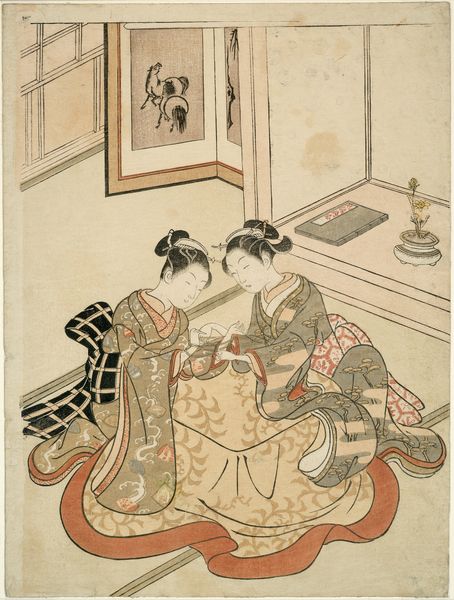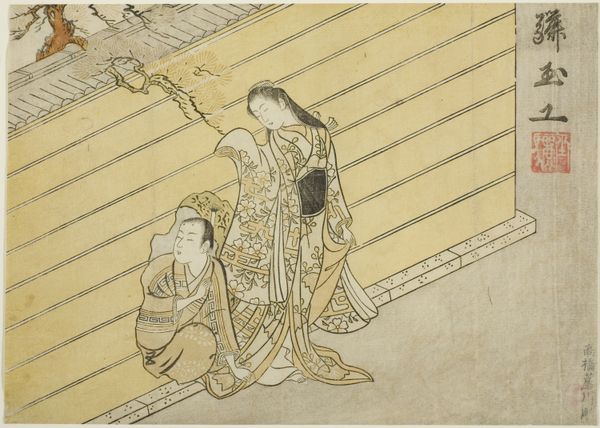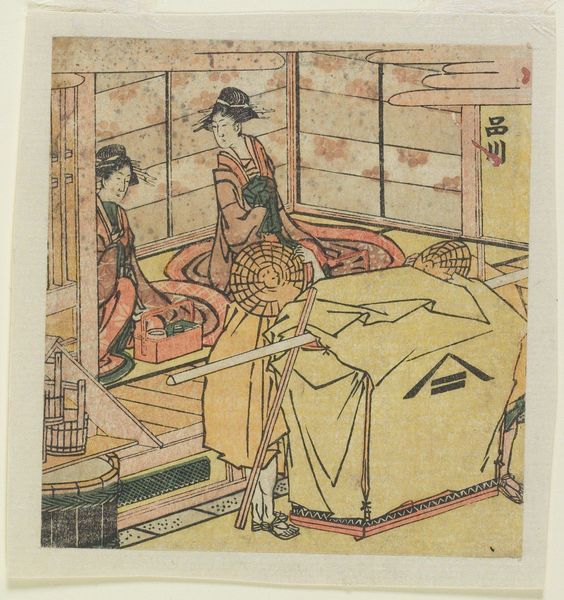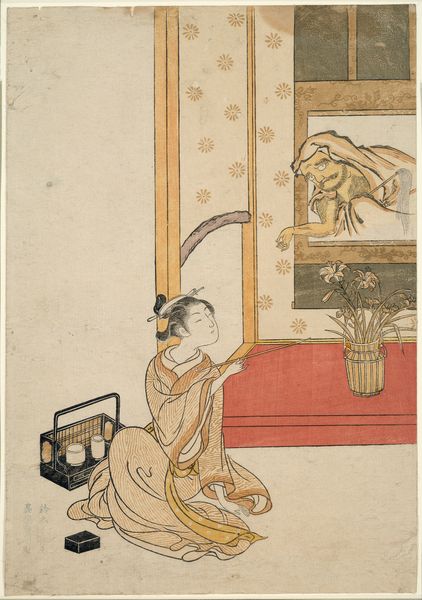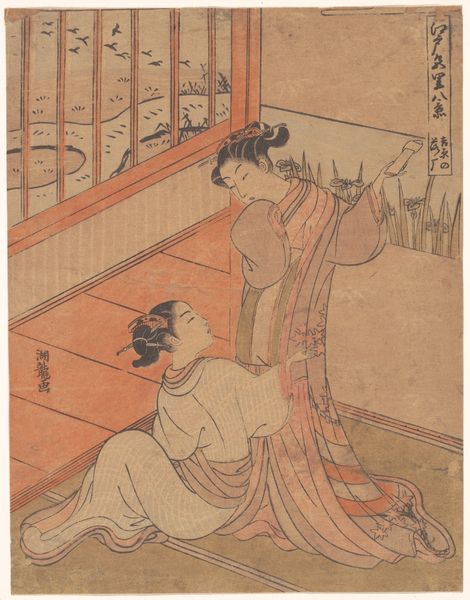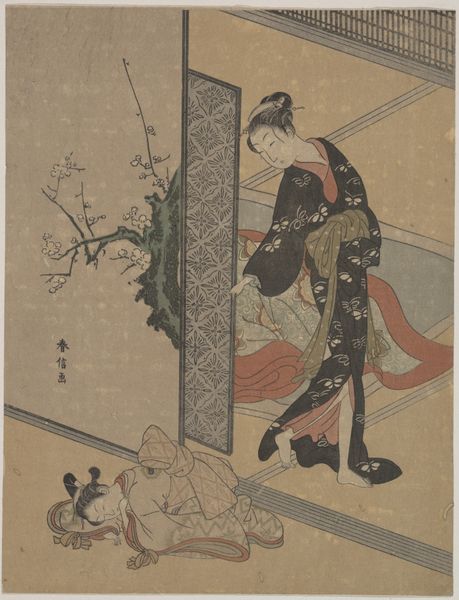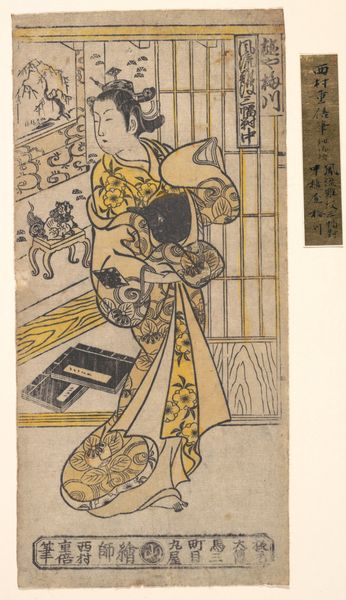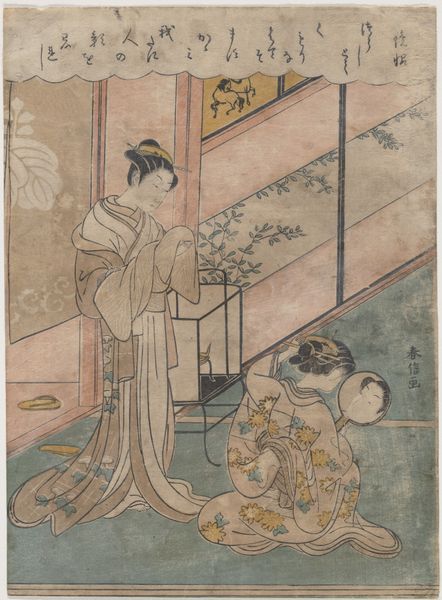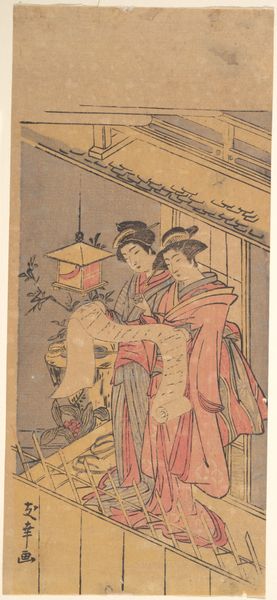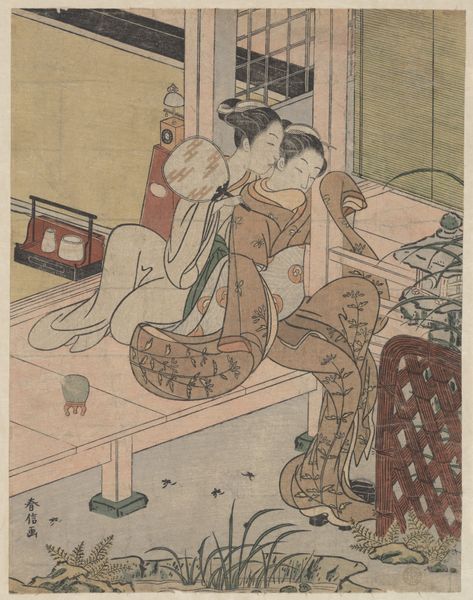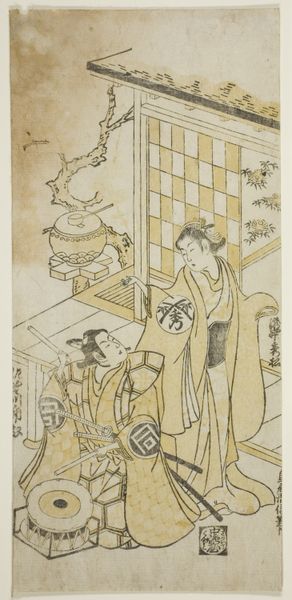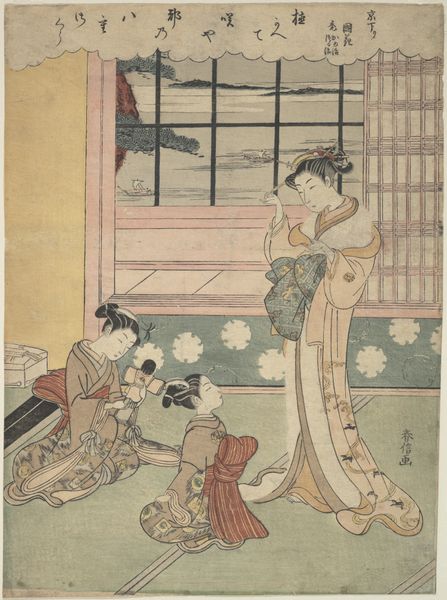
print, woodblock-print
#
portrait
# print
#
asian-art
#
landscape
#
ukiyo-e
#
woodblock-print
#
genre-painting
Dimensions: 12 1/8 × 6 1/8 in.
Copyright: Public Domain
Curator: The scene we are observing today is "Sleeping Young Woman with Mt. Fuji Above," a woodblock print created around the 1740s by Nishimura Shigenaga. The print employs a pleasing, monochromatic color scheme of yellows, ivories, and pale blues. What is your initial response? Editor: A striking moment of quietude. There's an intimacy in depicting a woman so unguarded, sleeping within her personal space. Yet, her interior scene opens onto the grand vista of Mount Fuji, evoking both domesticity and a connection to the wider world. Curator: Yes, the choice of materials is critical here. Woodblock prints allowed for the mass production and wider dissemination of art, moving away from the preciousness associated with painting. How do you think the creation and distribution of the work might relate to class, gender and cultural visibility at this time? Editor: In the context of ukiyo-e prints and genre paintings, it seems that this print would democratize the visual landscape, giving more widespread exposure to women who may otherwise be invisible to the arts' representation. A common woman is seen amid leisure instead of labor. Also, prints were commodities exchanged, sold, collected. Perhaps Nishimura Shigenaga implicates his subject in this network. Curator: Certainly, it opens to larger questions regarding labor, value, and cultural context. The print itself is a product of skilled craftsmanship and would be considered artisanal work rather than "fine art." How can we use intersectionality as a way to look closer? Editor: By considering the work as not only aesthetic, but historical evidence of broader patterns within gender and economics. What do you think are the main avenues for the woman's individual expression given this depiction? Is she aware of being rendered and traded in a market she has no participation in? I wonder about the conditions under which such intimate images are made available, especially for female subjects. Curator: Such an approach pushes us to rethink these traditional boundaries of what is deemed valuable and to consider labor within the art historical discourse. Even the texture of the paper, the marks from the woodblock itself – these all speak to the means of its production. Editor: I agree, considering both content and modes of production is crucial to developing a critical understanding of historical artwork and how these impact and intersect with questions of gender and class. Curator: Absolutely, and examining art through those different lenses opens it up to broader audiences, not just art historians. Editor: Right, these lenses enable dialogue that questions cultural visibility in general.
Comments
No comments
Be the first to comment and join the conversation on the ultimate creative platform.
